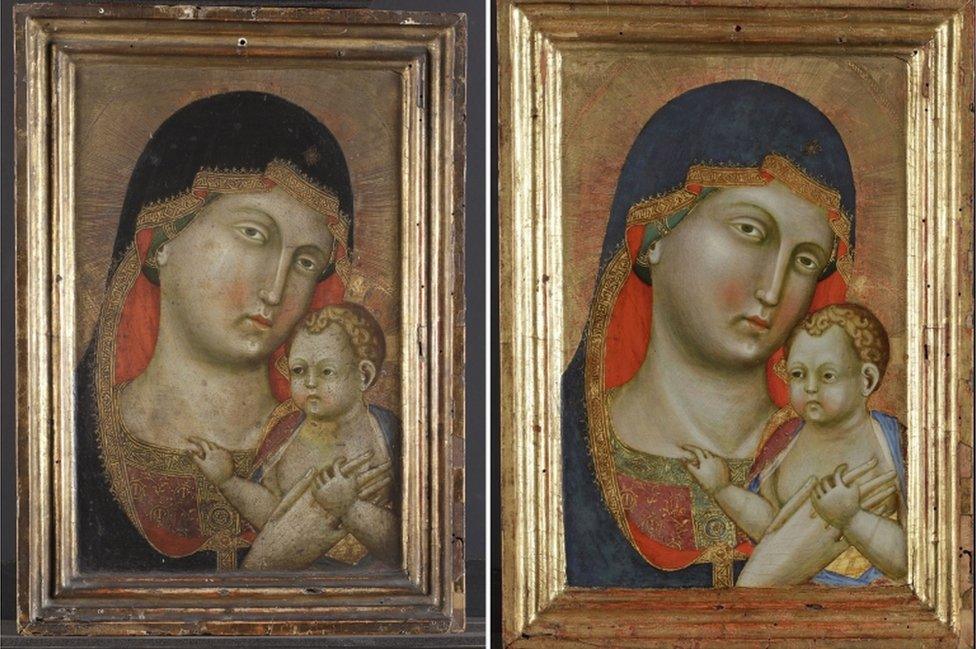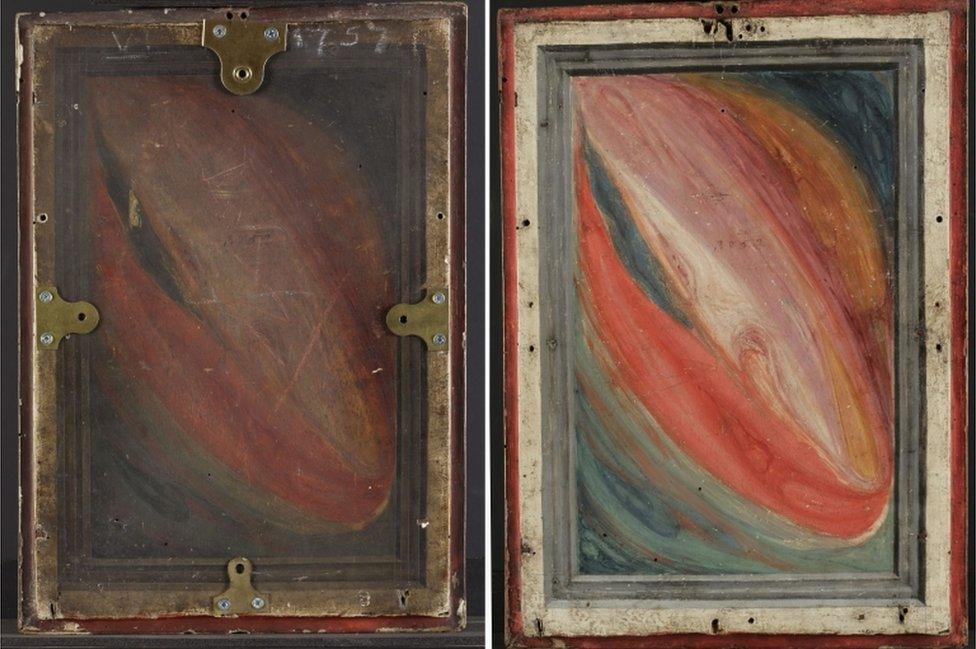Medieval portrait of Virgin Mary and Christ's double-sided secret
- Published

The detail of the folds in the Virgin Mary's veil was restored from a flat black overpaint to its original blue
A 14th Century portrait that hung in a Cambridge museum for decades has been revealed as double-sided after a 600-hour restoration project.
The Virgin Mary and Christ Child by Italian Renaissance artist Pietro di Niccolo da Orvieto, had been on display at the Fitzwilliam Museum.
Conservators preparing it for an exhibition found another painting on the reverse panel.
Experts believe it depicts the wound Jesus Christ sustained on the cross.

A vivid depiction of what experts believe was Jesus Christ's side wound sustained on the cross was revealed
The painting had always been hung unscrutinised with the Virgin Mary on show until preparation began for the Madonnas and Miracles exhibition, which depicts the world of religious devotion in the Italian Renaissance home.
The piece, which had been affected by centuries of discolouration and grime, was brought back its former glory by seven conservators from the museum's Hamilton Kerr Institute.
It is now thought the depiction of the Virgin Mary and Christ Child was originally made as a double-sided devotional object, for private prayer and contemplation for worshippers.
As well as the "vivid depiction" of the wound, infrared reflectography showed detail of the folds in the Virgin Mary's veil - known as a maphorion - after being invisible to the naked eye for centuries.
This was then restored from a flat black overpaint to its original bright blue hue - which symbolises the heavens.
According to the museum, the painting is "testament to the religious devotion of the Italian Renaissance".
The painting now sits in a glass display where both sides can be seen.